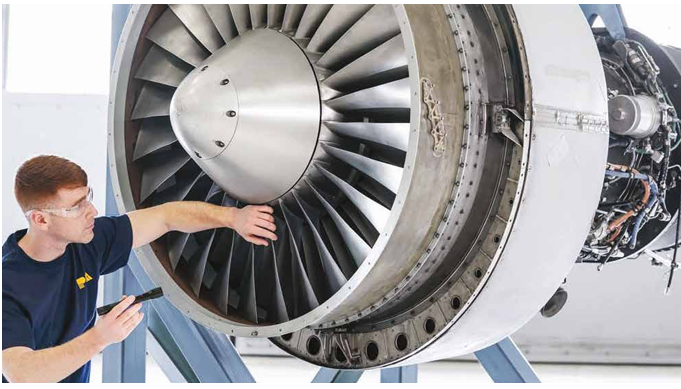
Shaping the Future of Maintenance Training:
Insights from the 82nd EAMTC General Assembly
The 82nd EAMTC General Assembly in Milan marked a turning point for aviation maintenance education. With over 50 organizations present, the event spotlighted Competency-Based Training and Assessment (CBTA) as the new standard. Showcased by Olympic Air and SWISS, CBTA proved its real-world impact cutting incidents by 35%. EASA’s regulatory updates and the ongoing RMT.0544 reforms signal a unified move toward outcome-driven, behavior-based training. By 2027, 60% of members will be CBTA-first. The future of aviation training? It’s already here.
The 82nd General Assembly of the European Aviation Maintenance Training Committee (EAMTC) brought together the aviation maintenance training community in Milan for a pivotal two-day gathering. With more than 50 member organizations participating including MROs, training organizations, regulators, and airlines the assembly served as a platform to advance training standards across Europe. The main theme of the event was clear: Competency-Based Training and Assessment (CBTA) is no longer just a concept it’s becoming the foundation of a new training era.
CBTA in Action: From Concept to Implementation
Two key case studies headlined the transition from theory to application: Olympic Air and SWISS.
Olympic Air presented its CBTA program developed for non-Part-66 license holders with limited aviation backgrounds. The course was designed using ICAO’s ADDIE model (Analyze, Design, Develop, Implement, Evaluate) and structured into five competency-based modules:
• Safety & Human Factors (16 hours): Focused on decision-making, risk awareness, and communication.
• Basic Aeronautical Knowledge (24 hours): Covered flight principles, structures, and propulsion systems.
• Maintenance Practices (30 hours): Practical training in tools, manuals, and procedures.
• Regulatory Framework (8 hours): Introduction to EASA Part-66 and Part-145 environments.
• Competency Demonstration (8 hours): Final scenario-based task evaluations with performance rubrics.
SWISS, in parallel, showcased its fully CBTA-integrated training for B1 engineers, emphasizing soft skills, real-world environments, and team performance. The outcome? A 35% reduction in human-factor-related maintenance incidents within one year.
Why CBTA Matters
The transition to CBTA reflects a broader philosophy shift. No longer are students evaluated solely by written tests; instead, training focuses on real-world outcomes. Key benefits discussed at the Assembly included:
• Real-world readiness over theoretical recall
• Behavior-based evaluationsv
• Fleet-specific and task-specific adaptability
• Emphasis on Threat & Error Management (TEM)
• Feedback-driven instruction cycles
• Regulatory standardization across Europe
•
Participants widely agreed that CBTA aligns better with the operational realities technicians face and builds a stronger safety culture across the industry.
RMT.0544: Regulatory Change in Progress
EASA representatives provided updates on the ongoing RMT.0544 rulemaking process for Part-147 organizations. Several significant proposals were reviewed:

• Language Proficiency: B2 CEFR level will be the new standard for both nominated managers and instructors. C1 is no longer mandatory.
• Training Locations: BT must be conducted only at approved sites, with a cap of three sessions per location annually.
• No Remote Exams: Examinations must take place on-site under the supervision of Competent Authorities (CAs).
• Experience Flexibility: Management roles can now be filled by those with backgrounds in compliance or quality oversight not only aviation.
• Simulation in Training: Discussion continues on whether simulated environments can fully substitute real maintenance workspaces for BT.
Though Safety Management Systems (SMS) were proposed for integration into training centers, this was ultimately removed from the opinion due to insufficient impact data. Nevertheless, documentation traceability and anti-fraud mechanisms remain key focus areas.

Post-Assembly Developments
In a closed online session following the main event, the President of EAMTC announced changes in Executive Committee (EC) Management. He introduced Fleur van der Vaart as the new General Assembly Manager.
Additionally, candidates for upcoming leadership elections were invited to introduce themselves for three open roles:
• President
• Vice President Government Affairs
• Vice President Internal Affairs
Looking Ahead
The message from Milan was unambiguous: CBTA is not only the future it’s the present. By 2027, over 60% of EAMTC-affiliated organizations are projected to adopt CBTA as their core methodology. As EASA continues to refine the regulatory framework, the focus remains on ensuring that aircraft maintenance personnel are not just trained but fully competent, safe, and operationally ready.
